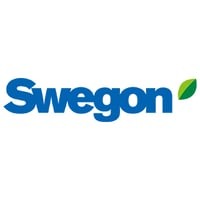Swegon created a wide range of propane products years ago and continues to expand it. These products are not only for outdoor installation, but also for indoor installation. Safety aspects relating to installation and operation are, of course, also taken into account.
Swegon has years of experience and is familiar with the facts and concepts that ensure you no longer have to worry about using propane. It also depends on the desired application, but if propane is the most suitable refrigerant after weighing up all the criteria, operation is no problem provided the prescribed regulations are observed.
Refrigerant selection: also a question of sustainability
When selecting the right refrigerant for a refrigeration system, many aspects need to be considered, from suitability for the required temperature range, suitable thermodynamic properties and pressure conditions to low final compression temperature and the availability of the refrigerant and components (such as compressors, oil, etc.). In addition to the technical aspects, the focus has now shifted to sustainability, compliance with applicable laws and minimising potential hazards. Above all, however, the impact of refrigerants on the environment, the associated regulations and restrictions – such as those imposed by the F-Gas Regulation – and thus the relevance of the choice of refrigerant are increasingly becoming the decisive criterion, which raises the question: Which refrigerant is available in the long term and sustainable?
The new F-Gas Regulation
The new F-Gas Regulation 2024/573, which has been in force in Europe since 11 March 2024, has set the course for further reducing emissions of fluorinated greenhouse gases. It provides for a gradual reduction in the sales volumes of HFCs (in tonnes of CO2 equivalent), culminating in a ban in 2050. As a result, alternative refrigerants with low GWP (global warming potential) are becoming increasingly important. These include natural refrigerants such as CO₂, propane and NH₃, as well as chemical refrigerants such as hydrofluoroolefins (HFO), which, unlike natural refrigerants, generally do not require major changes to the system design.
Why use propane at all?
Its properties as a refrigerant are similar to those of the synthetic refrigerant R22, and its temperature behaviour is comparable to that of R134a. For example, Swegon uses propane in energy-efficient cooling applications for flow temperatures between -10 °C and +18 °C.
Propane has a very low environmental impact (GWP = 0.02 according to AR6, ODP = 0); experts assume that only refrigerants with a GWP below 150 are (economically) future-proof in the long term.
Propane appliances for all situations
There are therefore good reasons to choose a propane appliance: as a natural, readily available refrigerant with a low environmental impact, propane is sustainable and future-proof, even in view of the upcoming requirements of the new F-gas Regulation. It can be used as a refrigerant for various applications, but is particularly interesting for the heat pump and refrigeration machine market and for small to medium-sized systems. Swegon offers one of the widest product portfolios for propane on the market – also with Eurovent certification: whether chillers or heat pumps, indoor or outdoor installation.
Of course, we have also taken safety into account.
For example, the SIGMA Zero series with R290 is also designed for indoor installation. It consists of highly efficient, water-cooled chillers and water-to-water heat pumps with inverter technology and integrated BlueThink® control. The units are very compact with a footprint of less than 1 m² and a fill quantity of less than 5 kg. They are suitable for both cooling and heating and can be installed indoors or outdoors. The units feature an intelligent safety concept for indoor installation.
Conclusion
No one needs to be afraid of planning an R290 system. The low environmental impact of the refrigerant and possible subsidies make them particularly interesting. With the right industrial partner and in compliance with the relevant guidelines, the planning, installation and operation of such systems is ecologically and economically attractive. And with a proper risk assessment and in compliance with safety regulations, operation is also safe.

























.jpg?width=75&name=Image%20(5).jpg)








.jpg?width=75&name=magnus%20andersson_550x550%20(1).jpg)











.jpg?width=75&name=0%20(1).jpg)





-4.png?width=75&name=MicrosoftTeams-image%20(3)-4.png)















